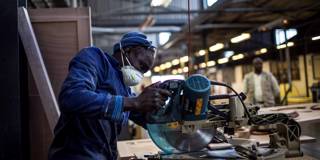The African Continental Free Trade Area is a positive step, but it is no panacea. If Africa is to overcome barriers to structural transformation and industrialization, a broader strategy, based on developmental regionalism, will be needed.
CAPE TOWN – The African Continental Free Trade Area, launched on January 1, has been hailed as a “game changer.” By bringing together 55 countries – with a total population of 1.3 billion and a combined GDP of $3.4 trillion – in a single market, many believe the AfCFTA could fuel Africa’s recovery from the COVID-19 crisis, spur structural transformation, and drive rapid industrialization. The World Bank estimates that trade integration could raise Africa’s income by 7% by 2035, lifting 30 million people out of extreme poverty.

CAPE TOWN – The African Continental Free Trade Area, launched on January 1, has been hailed as a “game changer.” By bringing together 55 countries – with a total population of 1.3 billion and a combined GDP of $3.4 trillion – in a single market, many believe the AfCFTA could fuel Africa’s recovery from the COVID-19 crisis, spur structural transformation, and drive rapid industrialization. The World Bank estimates that trade integration could raise Africa’s income by 7% by 2035, lifting 30 million people out of extreme poverty.